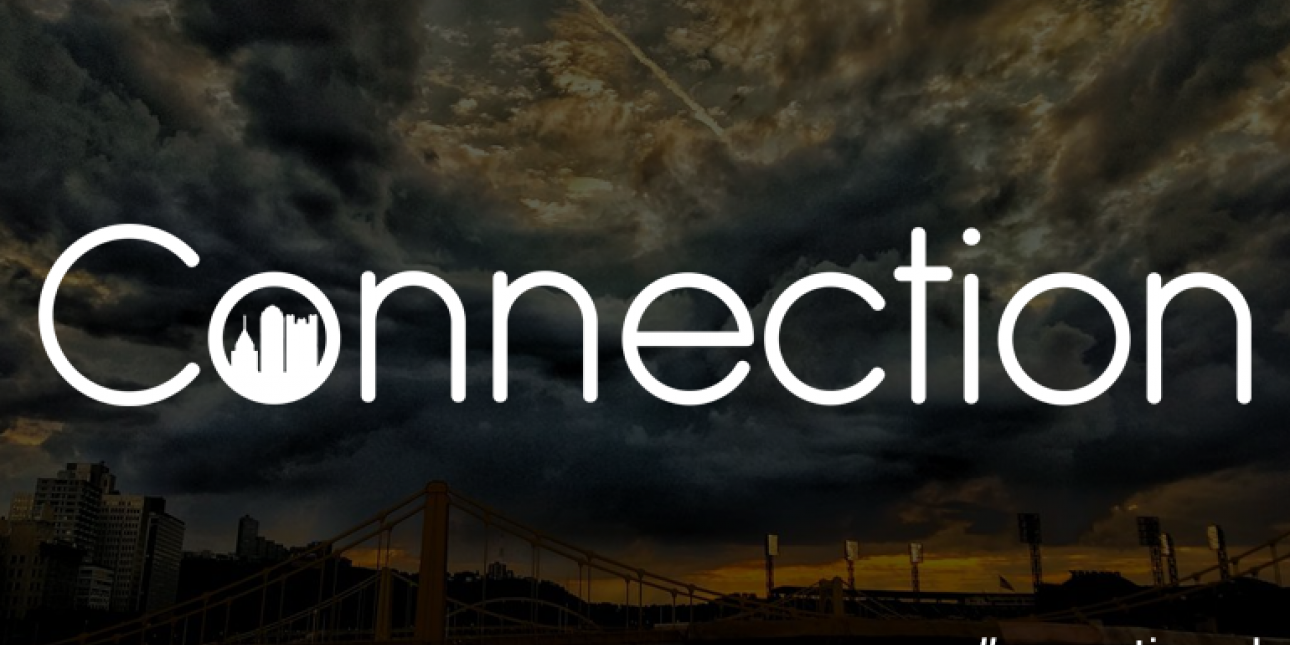#ConnectionPGH Talk: "Deconstructing Failure: Why It's Crucial To Your Success" by Vikki Lassiter, MS

About The Speaker
Vikki Lassiter, Partnerships Specialist, provides strategic direction for stakeholder outreach and expanding Measure of America’s collaborative advantage to support research, advocacy, and bottom-up innovation. Previously, Vikki was the senior advisor and executive director for the African American Collaborative Obesity Research Network based at Drexel University’s Dornsife School of Public Health. Vikki’s prior work has focused on a number of issues related to change management, health equity, and community-partnered research. Vikki earned an MS in Organizational Dynamics from the University of Pennsylvania and a BS in Psychology from the Pennsylvania State University.
About Connection 2017
The Connection 2017 experience took place in Pittsburgh, PA. To learn more about the event, visit our Connection page today.
About The Talk
As former President John F. Kennedy said, "success has a thousand fathers but failure is an orphan." But what if we took time to document when things don't work? In this insightful #ConnectionPGH talk, Vikki Lassiter demonstrates how we can more effectively learn from our failures by understanding the root cause of the problem that we are trying to solve.
Transcript:
Do you know that feeling, when you just know you have a great new idea? Your idea is the next step, and you know you just moved beyond just thinking outside of the box, you have moved to boxless thinking, and you're confident your new idea is an opportunity to move things and positively disrupt the system. But here's the thing, what if it's not about the next big thing, what if the real opportunity in front of us, in understanding what just happened. Now I imagine that we've all created something new, and had our great new ideas produce successful results. But at some point, even with the best of planning, we've all experienced the reality of failure. Now given the fact that failure is normal, how often do we really talk about it? Now, let's have a show of hands, who has recently attended a workshop or a session that was entitled something like "youth engagement strategies that didn't work"? Show of hands? Okay, seeing just a few, and I'm not surprised, because most often, we look for models, and we promote models that demonstrate success and best practices. But here's the thing, talking about what didn't work can be just as important as talking about what did work. Okay, now John Kennedy once said that, "success has a thousand fathers but failure is an orphan." So what if we took time to document when things don't work? And I mean, really take a look at patterns, try to understand, what were the real barriers? What if we took time to actually document this in a way, that we were sharing it more broadly, not only internally with our organizations, but also in the field? Now let's have a show of hands: again, how many individuals are part of an organization that has a strategic plan or blueprint that outlines your goals and your course of action? Show of hands? Just about everybody in the room. Now studies have shown that two-thirds of small and large organizations do not effectively implement the activities they have outlined in their strategic plan. So one more time, let's have a show of hands: how many of you work with organizations that have a failure protocol, an actual failure map? And by that I mean: documentation, and in-place process where you're doing a deep dive look in terms of what didn't work and actually having that for discussion and review for the projects that didn't quite hit the mark. Show of hands? It's at least one, okay, far fewer hands go up here, and I'm not surprised. But why is that so often we know that when we fail it's because we're trying to stretch and do something special? The reality is sometimes the more spectacular the failure, the more deliberately innovative we were trying to be with our activities. And we all know that talking about failure is hard. The reality of the fear of judgment, there's the fear the business consequences, and we just know that talking about failure makes you vulnerable. But the reality is that's so often when we fail, and being the optimist that we are, we try to move on. We think about what are the next steps so that we're successful with the next project. We do try to take some lessons in, so we keep those in mind moving forward, but if we don't fully examine what happens in the problem space, we run the risk of not actually being able to achieve results and impact. So the problem space is where we stay rooted in. The question is where we actually determine and understand what's the actual problem we're working on. It's the space where we actually begin to unveil and uncover what are the real unmet needs of our target audience, and it's the space we want to stay in before we rush to find the new answers or the new best thing in terms of solutions. So let me share a story with you. Back in 1957, there were two engineers, Al Fielding and Mark Siobhan, and they created what they thought was going to be the new best thing: an interior design product. Their product was a high-end textured wallpaper, and that item, what you see here, is actually what we know today as bubble wrap. So the idea of covering your walls with something that popped with fun just didn't take off, so a later attempt, they tried to market it as greenhouse insulation. And unfortunately, that was a flop too, but in time they actually found an unmet need. They connected with the folks at IBM who were trying to figure out the best way to transport their newly launched computers. And with that, the not so popular wallpaper became an overnight success. Now, I hope this story can shed light on two important dynamics: one, the reality of the importance of staying in the problem space before we rush to find solutions because it really does matter, and secondly, the importance in the power of the questions that we choose to ask. We're trying to figure out what new benefit are we really creating, and what problem are we really solving, because maybe, if we spend more time figuring out the right questions, we can move faster. Now, let's take this example, and again, think about this idea of a failure map. This idea of when we have this information, how we can share and use it when we understand what didn't work and why we weren't able to achieve the results we had aimed for. So one of the important things you want to think about with a failure map is keeping it simple. We want to make sure the information that we're sharing is digestible, because the more digestible it is, the easier it is for people to learn and really stay re-engaged in the problem space. And the other thing is, we want to be sure to go deep, we want to understand what were those real barriers that actually prevented us from achieving success. And once we identify them, we want to go deeper, we really want to uncover what happened in a way. And you be surprised, you may discover that your target audience, and even sometimes, a new key audience, it's telling you something that you didn't hear before. And that can change everything. So staying in the problem space, now I'm not going to pretend it's easy, but it's necessary. It's definitely worth the effort, because if we move too quickly to find the new big idea, the next big solution, we might find ourselves continuing to solve the wrong problem. So let's spend a minute talking about the solution space. Now this is a space where we're actually implementing programs and services that are actually high in satisfaction for our target audience. We're actually meeting the unmet needs of our target audience, and we're delivering results, so what are some of the opportunities that actually are presented within the solution space? Well one is reliable data, because data can tell us what went right with a project, as well as what went wrong with a project. And sometimes, as leaders, one of the most important decisions we have to make is understanding when we should stay the course and when we should change directions. Now I look at this idea, the pivot, a little bit more closely. Let's take a page from the startup world. Now often, startups will pivot when they get new information or get new data that allows them to create better insights, and when they have those better insights, sometimes, it also helps them to understand something different about their customer and that understanding also may lead to understanding differences and more effective incentives. Now did you know, in 2005, when YouTube launched, it was actually a dating video site? Folks say that. Oh yeah, the slogan was, "tune in, and hook up." Yes, now, the founders realized fairly quickly that that was not taking- ah, but they were able to look at data and they were able to observe how folks were using the site and that was just to simply share personal videos. So they revamped the site and decided to just focus on personal video sharing. Now I think you're probably aware that YouTube went on to become a billion dollar company, and it's estimated that over 35 hours of new content is uploaded every minute. So I think it goes without saying this idea of moving from hook in, and you know, "hook, tune in, and hook up," to actually "broadcast yourself" was definitely the way to go. And, as social innovators, we have the opportunity to pivot successfully as well if we get our hands on reliable data that actually helps us to see if there's a more effective way to solve a problem or a better solution in terms of re-purposing something that we're already doing. But the idea is that the pivot is not just a singular activity, it's an ongoing iterative process, and it does it requires reliable data, but also trust and relationships and the ability sometimes to look outside of our organizations and our current partners for more multi-directional collaboration. Now it's also really important to understand this idea in the sense that having the right data can really take our efforts right to the next level and also help us see the entire system that we're operating in. So understanding the different elements and our organizations and how they relate, as well as how elements relate in the coalitions or the collaborative that we participate in, and we'd be surprised. And understanding how that can actually help us adapt and move differently. Now I'm not going to pretend that this is easy, kind of understanding or reading through the sea of data, but it's so important, because once we have the right data it can help us in terms of making faster and better decisions, save time as well as effort, and what we're doing, so it's important to really think about, you know, how we can get our hands on this data. And sometimes we do have to think about openness, and this goes to the point of thinking about what we can share, that we're learning from our organizations. Now so often, you know, there's data we can't share, but I would encourage that we kind of move our default from opacity to openness. Share what didn't work, share what we're learning more broadly. Now it's not just about having the data or collecting the data ourselves from within our organizations, it's also about the story that we can tell with data. So one of the most important and fun things we have now are data visualizations, but the thing with visualizations is that the most important aspect of them is really just encouraging engagement. So let me show a quick example. This is an actual screenshot from one of Measure of America's interactive data tools called "Data to Go." New York City - and this particular screenshot is from a report that we released earlier this year entitled, "Who Graduates: New Findings on New York City High School Emission and Graduation Rates," and you can see here that the darker areas on the map actually represent the higher actual percentage of young people that are graduating on time. But we can see that there's a real significant gap here: there's a 33.1% gap between the community district with the highest rate of on-time graduation at 92.3 percent. And those students, and we have here, is actually Bronx Community District with the lowest rate of graduation of 59.2%, so the data is really showing us that there's factors that we need to understand and uncover to make sure that all young people, no matter where they live, have a better success rate of graduating on time. So just as just a quick example of seeing what the data is showing us. Now, one of the things that you have to be mindful of, of course, is that you may not have the capacity to work with the data but I would encourage that you do what you do best and partner for the rest. There's definitely an interest in co-creation. I know personally it's all about getting the questions from practitioners, understanding what's happening in the building, hearing from community members, as well as from youth, and be really informed so that we have powerful and packed full research that really ensures that we're moving the needle in terms of policy practice as well as community action. So we started this journey thinking about, you know, the importance of understanding what just happened. And I hope that we can all rise to the occasion of not just embracing failure, but also using it as an opportunity to document what went wrong, and sharing that internally as well as with our colleagues in the field. And yes, this is an extra step, but I think sometimes in order to achieve the results we're all looking for we have to slow down in order to speed up. Thank you.


